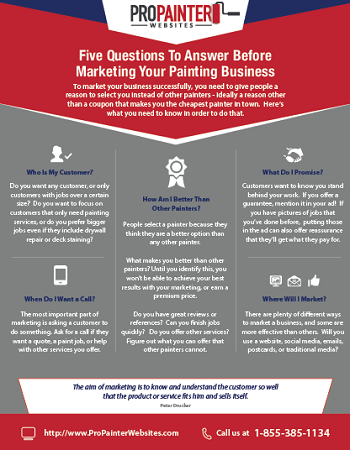Learn More About The Methods Which Seasonal Variables Can Influence The Success Of Industrial External Paint And Establish The Very Best Times To Accomplish Long-Term Outcomes For Your Job
Learn More About The Methods Which Seasonal Variables Can Influence The Success Of Industrial External Paint And Establish The Very Best Times To Accomplish Long-Term Outcomes For Your Job
Blog Article
Material Created By-Carlson Urquhart
When you're intending a business external painting project, seasonal factors can make or break your results. You'll want to take into consideration just how temperature and moisture impact paint application and drying times. Choosing the appropriate season can ensure your paint adheres appropriately and lasts longer. However which periods are really the best for this kind of work? Allow's explore the key elements that can influence your project's success.
The Influence of Temperature on Paint Application
When you're preparing a business external painting project, the temperature can substantially influence exactly how well the paint adheres and dries.
Ideally, you wish to repaint when temperatures vary between 50 ° F and 85 ° F. If it's too cool, the paint may not treat appropriately, resulting in problems like peeling or fracturing.
On the flip side, if it's as well hot, the paint can dry too rapidly, stopping appropriate bond and causing an uneven coating.
You must additionally consider the time of day; morning or late afternoon supplies cooler temperature levels, which can be more desirable.
Constantly inspect the producer's suggestions for the certain paint you're making use of, as they typically supply assistance on the excellent temperature level array for optimal outcomes.
Moisture and Its Impact on Drying Times
Temperature level isn't the only ecological aspect that affects your industrial outside painting project; moisture plays a considerable duty as well. High moisture levels can reduce drying times significantly, influencing the total high quality of your paint job.
When the air is filled with moisture, the paint takes longer to cure, which can result in issues like poor attachment and a higher danger of mildew growth. If you're painting on an especially moist day, be gotten ready for extensive delay times between layers.
It's crucial to keep track of local weather conditions and plan accordingly. Preferably, aim for humidity levels in between 40% and 70% for optimal drying.
Maintaining https://interiorhousepaintersnear88776.vidublog.com/33331247/renew-your-home-the-function-of-residence-painters-in-creating-stunning-interiors consider mind ensures your job stays on track and supplies an enduring surface.
Best Seasons for Commercial Exterior Paint Projects
What's the most effective season for your business outside painting tasks?
Spring and very early fall are typically your best bets. During these periods, temperatures are moderate, and humidity degrees are frequently lower, creating ideal problems for paint application and drying.
Prevent summer's intense heat, which can trigger paint to dry too quickly, resulting in inadequate adhesion and surface. Similarly, winter's cool temperature levels can impede appropriate drying and healing, taking the chance of the durability of your paint task.
Go for days with temperatures in between 50 ° F and 85 ° F for ideal results. Keep in mind to inspect the neighborhood weather prediction for rainfall, as damp problems can ruin your task.
Preparation around these variables guarantees your painting project runs efficiently and lasts longer.
Verdict
In conclusion, preparing your business external paint projects around seasonal considerations can make a substantial difference in the end result. By organizing job during the optimal temperatures and moisture degrees, you'll make certain far better bond and drying times. Bear in mind to watch on neighborhood weather report and choose the correct time of year-- springtime and very early loss are your best bets. Taking these steps will assist you achieve a resilient and expert surface that lasts.
